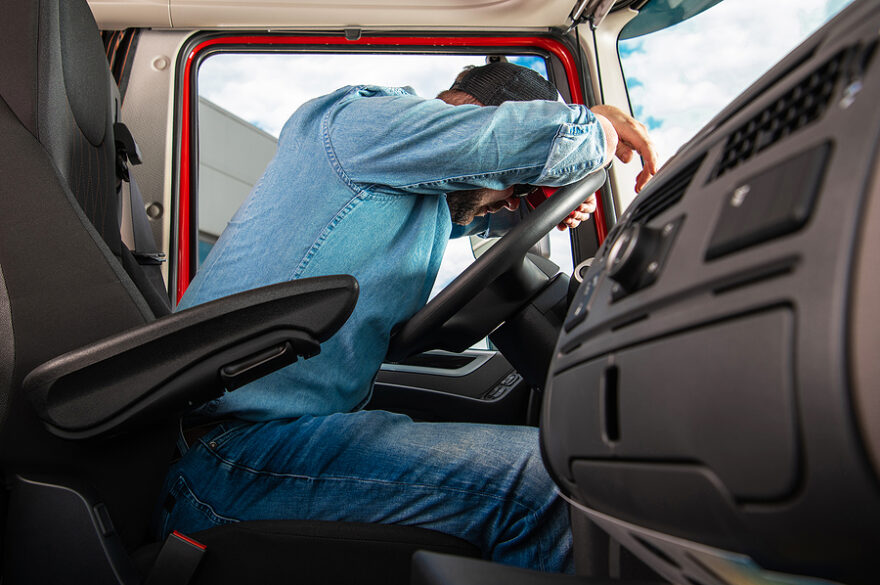Fatal commercial truck accidents take place every day on highways and roadways across the United States. In fact, accidents involving commercial vehicles were responsible for over 5,000 deaths in 2022, representing an increase of more than 56% over the last ten years. An overwhelming number of fatalities were the occupants of passenger vehicles.
Commercial trucks are roughly 60 feet longer than the average car and, when fully loaded, can weigh up to 80,000 pounds. This enormous size and weight make them cumbersome, difficult to maneuver and require as much as 40% more room than a car to come to a complete stop.
Although most commercial truck drivers make every effort to operate their rigs safely, the LargeTruck Causation Study conducted by the Federal Motor Carriers Safety Administration revealed that negligence and driver error caused or contributed to more than 90% of all serious and fatal truck accidents. If you’ve been in a trucking accident, contact the lawyers at Rasansky Law Firm to learn how they can help.
Fatigued Driving

Truckers are often given unrealistic delivery deadlines coupled with financial incentives. As a result, many drivers continue to stay on the road for far too long and are simply too exhausted to drive safely. Sadly, numerous studies have shown that fatigued driving is just as dangerous as driving under the influence.
Although the Department of Transportation has enacted an Hours of Service rule that governs the number of consecutive hours truckers are allowed to drive before taking a rest break, many freight companies encourage their drivers to ignore this and other safety regulations. A report published by The National Transportation Safety Board shows that as much as 40% of all commercial truck accidents are caused by driver fatigue and includes the caveat that the actual percentage is probably significantly larger since very few police reports document this form of driver impairment.
Distracted Driving
In 2019, statistics released by the National Highway Traffic Safety Administration show that 3,177 people were killed due to distracted driving. Another study also revealed that more than 70% of all commercial truck accidents took place while the truck operator was focused on something other than safe driving.
Most people think that distracted driving refers to cell phone use behind the wheel, such as making calls or reading text messages. However, distracted driving is actually any activity that takes a driver’s focus off the roadway, including drinking, eating, personal grooming, and adjusting the radio. Driver distractions can also be external to the vehicle, such as rubbernecking, billboards, and looking for a specific side street. The same 2019 NHTSA data sets propose that roughly 11,000 truck accidents were prompted by distractions external to the truck driver.
Speeding

In 2022, speeding accounted for almost 30% of all fatal motor vehicle accidents in the United States. Although speeding is dangerous for any driver, it is especially so when the driver is behind the wheel of a 40-ton tractor-trailer. This is primarily due to their enormity relative to other vehicles and their inability to handle sudden stops. Truckers who speed are also more prone to their cargo becoming unbalanced and having a hard time successfully maneuvering sharp turns.
Reckless and Aggressive Driving
The FMCSA’s Large Truck Crash Causation Study highlighted the fact that poor driver decisions, including reckless or aggressive driving, were contributing factors in about 40% of all truck accidents. Poor decisions include any behavior or act that violates the duty of care truck drivers owe to others on the roadway, such as:
- Speeding
- Tailgating
- Unsafe or unlawful lane changes
- Failing to yield the right of way
- Failing to obey traffic signals and signs
- Improper passing
If you see a trucker operating their vehicle recklessly or aggressively, you can report it to local law enforcement by calling 911. Almost all commercial trucks also have a phone number printed somewhere on the vehicle you can call to report aggressive, reckless, or negligent driving.
Driving Under the Influence

The same federal regulations that govern the number of hours a trucker can drive also prohibit them from driving while under the influence of alcohol or drugs, including certain prescription medications. However, both outdated and recent studies have consistently shown that the use of alcohol, marijuana, and narcotics like cocaine, meth, and speed is inordinately high among truckers and likely tied to their aforementioned excessive working hours.
Being under enormous pressure to meet tight, even implausible, delivery deadlines, it is hardly surprising that some truck drivers turn to stimulants that, while effective, are nevertheless illegal in order to stay alert, awake, and make their deliveries ahead of time. Unfortunately, these drugs can also cause agitation, vertigo, and hallucinations, alter the driver’s reactions and perceptions in ways that cannot be predicted, and increase their odds of causing a serious or fatal truck accident.
Other studies have also found that truck drivers in the United States have the highest percentages of positive alcohol tests in the world.
Improperly Loaded Cargo
Cargo that is not properly loaded and secured can shift during transport, resulting in a truck that is off-balance. Once this happens, the driver can easily lose control of the vehicle and cause an accident. An improperly secured load could fall off the truck, causing a dangerous roadway obstacle that presents a threat to the safety of other drivers. If the rig is transporting hazardous materials, a collision could initiate an explosion, fire, or toxic spill. The Cargo Securement Rules enacted by the Federal Motor Carrier Safety Administration aims to prevent these kinds of truck accidents.
Equipment Malfunctions and Mechanical Failures
The FMCSA has also established guidelines regarding the inspection and maintenance of commercial vehicles. The 2019 Large Truck Crash Causation Study shows that around 10% of all truck accidents are triggered by mechanical issues with the vehicle.
For a freight company to make money, its vehicles have to be on the road making timely deliveries. Unfortunately, this means that in order to avoid a profitable rig being taken off the road, freight companies often postpone routine inspections and badly needed repairs. If a freight company outsources its maintenance and repairs, its subcontractors would be under pressure to get that truck back into service, even if it means using substandard parts and unqualified labor.
Related Posts:
- 20 Best Gaming Headset Under 50$ 2024 - for PC, PS4,…
- 12 Best Car Wax For Black Cars 2024 - Protection and…
- Top 10 Best Power Inverter for Car 2024 - Keep Your…
- 8 Causes of Dangerous and Deadly Truck Accidents
- Preventive Measures That Truck Drivers Must Follow…
- 15 Best Shoes for Walking on Concrete 2024 - Soft &…







